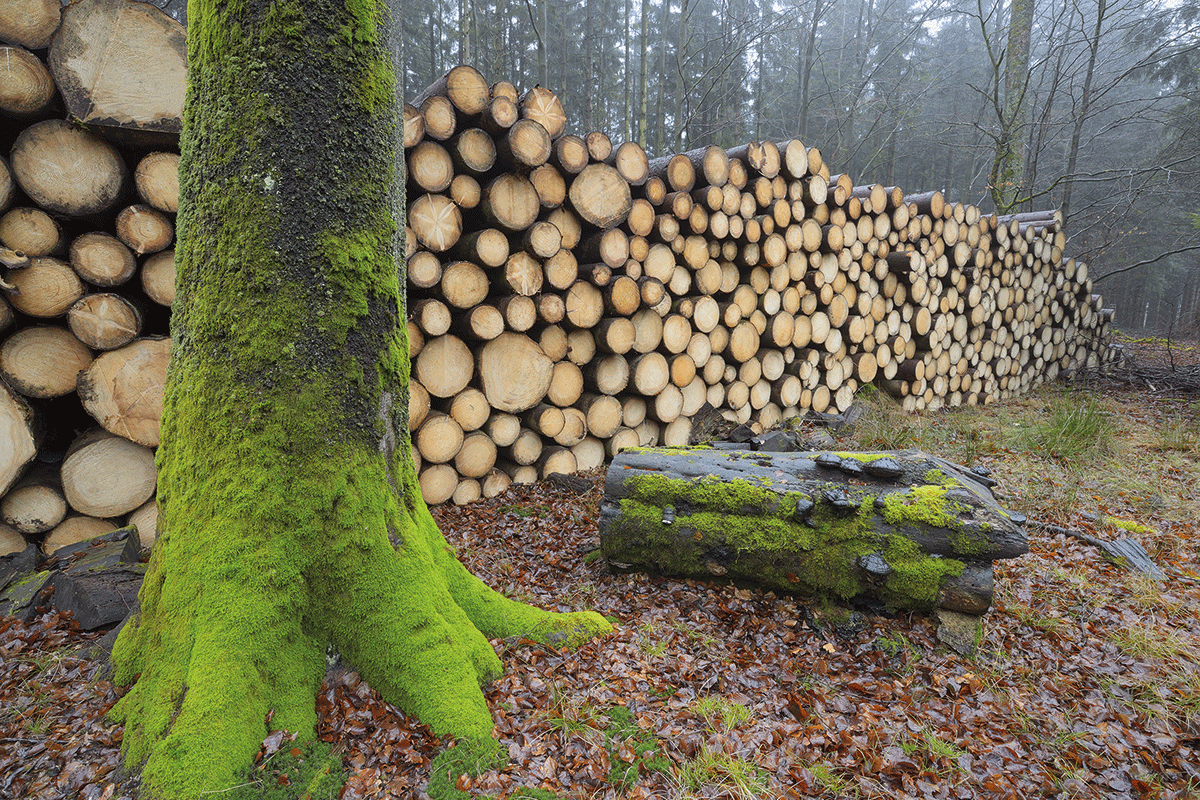
Victoria Judd, a lawyer at Pillsbury Winthrop Shaw Pittman LLP, considers the sustainability credentials of biomass, and what this bodes for its future.
In the aftermath of BREXIT and in view of COP26 in Glasgow in November 2021, the UK has been focussing on decarbonisation in relation to its infrastructure and power offerings. Multiple initiatives have been launched: the UK Infrastructure Bank has been set up to prioritise investment in projects that tackle climate change, there are efforts to accelerate green finance, and green energy continues to receive subsidies to encourage construction and production of more renewable power.
This renewed energy and focus on the energy transition is good news to ensure we continue to move towards the UK’s net zero targets. However, the UK currently relies on biomass energy generation to transition from burning fossil fuels, and new understanding around bioenergy has cast a very different light on this powerhouse of the energy transition. With the Government having promised a £4 million investment into biomass in March 2021, will this energy source remain an important part of the UK’s energy mix?

Are we seeing the wood for the trees?
As it stands, electricity generation from renewable sources continues to increase year on year. Figures for 2020 provide that 59% of the UK’s electricity was generated from low carbon sources, whether from renewables or nuclear. A large portion of this, namely 12% of the UK’s total electricity, is made from bioenergy or power generated by burning plant biomass.
Such electricity was initially considered a good alternative to burning fossil fuels. This is why the UK Government provides generous subsidies for renewable electricity for biomass. Subsidies come in the form of renewable obligation certificates (ROCs), contracts for difference and tax breaks by way of a carbon tax exemption.
Though there are only three companies burning biomass for generating stations over 250GW in size, it is estimated that £1.9 billion was paid in subsidies to biomass generators in 2020. £1 in every £5 of renewable subsidies are paid to biomass electricity generators, according to the lobbying group Cut Carbon Not Forests.
It is now recognised that biomass is much less green than other renewable sources of energy, like wind and solar. Questions as to environmental sustainability are raised by the processes involved in the cutting of trees, processing of the wood into pellets and (in the cases of large biomass generators) shipping such pellets across oceans to supply generating infrastructure. This is in addition to the combustion of wood pellets in the electricity generation process itself, which releases large amounts of carbon dioxide into the atmosphere.
Biomass remains a better alternative to fossil fuels, given that fewer pollutants are released into the atmosphere in the burning of biomass, but also given that trees can be replanted. However, it can take 20 to 30 years for trees to grow back and capture the equivalent amount of carbon dioxide to that released during biomass combustion. The “full life cycle” analysis which considers the recapture of carbon dioxide by new trees is a not an attractive analysis when the imperative is to achieve net zero in the near future.
With the UK Government’s eye on net zero and increasing incentives towards carbon zero renewables, as opposed to low carbon renewables like biomass, the UK Government has decreased subsidies available to biomass generation. In fact, new contracts for difference will no longer be available for biomass generators being commissioned from 2021/2022 (though there is an exception for biomass generators deployed with combined heat and power).
However, contracts for difference already granted to biomass generators will continue to provide large UK Government subsidies to biomass generators. These subsidies are due to be paid until 2027 and there is little that can be done to change these subsidies under the terms of the existing contracts for difference.
New green shoots for UK biomass
So what can be done to make UK bioenergy a better fit for long-term green energy goals?
Firstly, subsidies to biomass electricity generators could potentially be reduced by amending secondary legislation so that less money is paid out under the ROC scheme or reducing the tax exemptions. To this end, environmental lobbying groups continue to apply pressure to reduce subsidies granted for biomass electricity generation. Their intent is that such subsidies would be reallocated to other green power generators. This would make large scale biomass electricity generation much less economically attractive.
At this time though, there does not appear to be any Government intention to change support provided to existing biomass generators. For instance, there is no mention of biomass in the UK Government’s Ten Point Plan for a Green Industrial Revolution.
The immediate focus therefore should be on improving the sustainability of existing power plants and their supply chains.
Carbon emissions can be cut at current biomass power plants. This is already being considered at Drax Power Station in North Yorkshire. Drax will associate biomass generation with carbon capture and storage to ensure that carbon dioxide from combustion of wood pellets is no longer released into the atmosphere. Though undeniably a positive step, construction is not set to begin until at least 2024, with installation completing by 2027. Nevertheless, this will still be a significant assistance towards hitting the UK’s net zero targets for 2050.
It is also key to develop and improve sustainable policies in relation to forest maintenance and wood pellet supply chains. While biomass suppliers must already provide certificates as to sustainability policies and practices, they should continue to improve practices with ambitious and achievable goals.
In terms of supply chains, pelleting and shipping are the most carbon intensive steps. Tackling these steps to decrease the carbon intensity of the biomass supply chain will certainly help the overall carbon emissions associated with biomass as an energy source.
To tackle this issue and promote local sourcing, the UK Government launched a program in March 2021 to invest £4 million in new biomass projects. This Biomass Feedstock Innovation Program is aimed at increasing the production of sustainably sourced biomass in the UK. It intends to fuel innovation relating to the production of energy crops and sustainably sourced biomass. With a limit of £200,000 per project, at least 20 innovative projects could receive funding. Now closed for new applications since 7 May 2021, the impact of such innovations will undoubtedly take some time to filter through to the biomass electricity generation market.
In the short term, we will continue to rely on biomass as an energy source in the UK in its current form. We can take some comfort from the fact that biomass remains a cleaner alternative to fossil fuels. Biomass electricity is therefore a helpful component in the energy transition, as it provides reliable baseload energy while we move away from using coal and to a lesser extent gas, for electricity generation. In addition, efforts are being made to decarbonize this electricity source. However, continued progress and improvement is the name of the game as we seek to hit our emissions targets.
To the extent that companies in the space achieve significant progress at all steps from supply to electricity generation, then perhaps large-scale biomass electricity generation may not just be a power source for the energy transition but could form part of the energy mix in the longer term.






